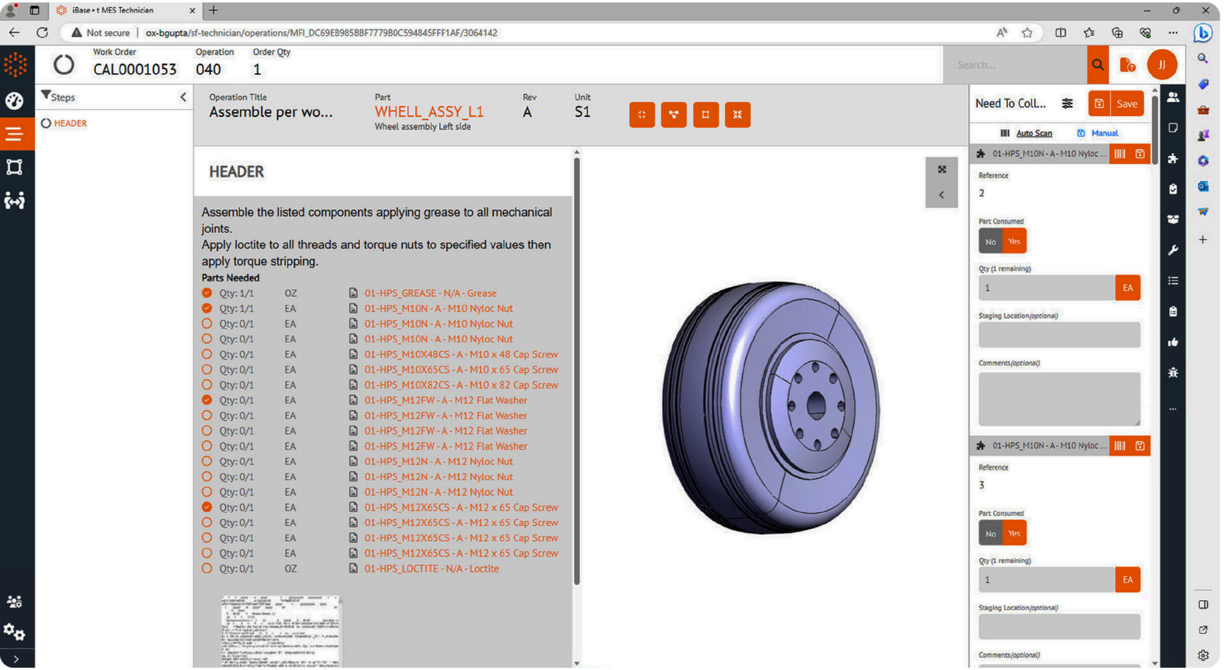When leading satellite company, Inmarsat, announced earlier this year the firm had suffered an “unexpected anomaly” with a new communications satellite, the company could not disclose the root cause of the issue, only confirming a power subsystem anomaly during the satellite’s orbit raising phase.

Just weeks earlier, Viasat (which now also owns Inmarsat), experienced a major issue with its satellite, ViaSat-3, that unexpectedly encountered problems with a large reflector antenna.
These two recent examples of satellite malfunctions highlight the critical need for manufacturers to ensure the quality and performance of their program before they launch into space.
Unfortunately, post-launch, space organizations cannot simply organize Hubble- telescope-esque missions to satellites when they are in need of repair. Instead, engineers are tasked with the management, repair, and upgrade of satellite assets from unreachable distances.
This is becoming increasingly important as space becomes more central in national cyber defenses throughout the world. Thankfully, digital manufacturing solutions are helping to overcome these challenges and are unlocking a new degree of lifecycle management across the space industry.
The Push For Digital Solutions
Operating nearly 3,000 satellites, the United States is responsible for nearly half of all of the satellites on-orbit today highlighting the public-private partnership that underpins the space industry.
Now five years out from inception, the Department of Defense’s Digital Engineering Strategy has served as a guide point for implementing digital practices for all parties involved in the production of assets serving the national defense.
The program’s overarching goals are to promote a transition to digital models, as well as advance the use of these digital alternatives as a system of communication for all involved in the manufacturing process.
For lack of a better phrase, the digital thread is a common thread that connects the goals set forth by the DoD Digital Engineering Strategy to the value and purpose of today’s leading digital manufacturing vendors, and one that presents a key solution to the core challenges for satellite manufacturers.
The Benefits Of Digital Thread
The digital thread was born out of similar origins and serves as the basis from which today’s satellite manufactures can rectify critical problems post launch.

Developed as a concept in A&D manufacturing, the digital guide manufacturing operations to make the most of digital technology to manage complex production, improve efficiency, quality and velocity, and facilitate interdepartmental communication through a product’s lifecycle.
A core goal of the Digital Engineering Strategy is to provide the authoritative source of truth for stakeholders across organizations to access, manage, protect, and analyze the models and data and serves the basis for connecting traditionally siloed elements and providing an integrated information exchange throughout the lifecycle.
At its core, the digital thread represents the digitally linked data that accounts for all value-add/change during and after an assets production which includes the definition of a product, its configuration, manufacturing and repair processes, logistics, operational support.
Investment in digital technology that enables the digital thread is at the forefront of industry leaders. In a survey of Aerospace and Defense manufacturers by PTC and Tech Clarity, a majority of respondents reported improvements in engineering efficiency and product innovation after adopting a digital thread strategy, with a wide majority reporting a reduction in time to market and 92% reporting an improvement in product quality.
These results have led to a marked impact in industry leadership prioritizing digital transformation with over three quarters of Aerospace and Defense manufacturers viewing the digital thread as critical to achieving speed to capability, readiness, and cost savings
The Digital Thread in Space
When malfunctioning occurs and spacecraft are lost in space, the digital thread can serve as the basis for saving millions of dollars and countless hours of time and energy. A team tasked with fixing the problem has access to the digital information needed to take immediate action.
Additionally, with access to the same information linked through the digital thread, teams can model and simulate remediation ahead of their action and ensure the best path to rectify the problems.
The benefits are felt when the problem comes up as well as before they even occur, as the digital thread allows for teams to test for potential problem points ahead of deployment.
Adopting the digital thread is becoming an integral step for complex manufacturers and sits at the core of the future of the space manufacturing industry.
Satellite manufacturers must take advantage of the digital tools available to them to be more productive, innovate faster, and achieve program execution excellence now and into the future.
iBase-t Update
Tech Soft 3D, a leading provider of engineering software development toolkits, recently announced that iBase-t, the company that helps their customers simplify how complex products are built and maintained, has decided to integrate HOOPS Exchange, a leading CAD import and export library, into iBase-t’s Solumina iSeries Manufacturing Operations Platform.
The integration will provide discrete manufacturers the ability to collaborate on 3D digital models and designs in virtually any CAD format, a critical element in adopting a model-based enterprise.
Leveraging HOOPS Exchange within Solumina, iBase-t customers will be able to view, interrogate, modify and publish models from partners in more than 30 CAD and engineering data formats.
iBase-t provides digital manufacturing and sustainment solutions that drive innovation for complex discrete manufacturers in the space, aerospace and defense, electronics, industrial equipment, medical device, nuclear, and shipbuilding industries.
The company helps customers on their model-based enterprise (MBE) journeys, improving the quality, speed and efficiency with which they design and manufacture complex products. MBE unlocks the intelligence of 3D digital models to automate downstream production processes, improve visibility to design changes, lower costs, and increase quality.

By integrating HOOPS Exchange into the Solumina platform, iBase-t gives its customers further advanced tools to leverage dynamic 3D models throughout the product lifecycle, providing real-time visibility to product changes and creating a digital thread that drives traceability and agility throughout the process. It also helps customers take advantage of rapidly growing technology trends such as AR and VR integration, AI, and more.
“We look forward to working with Tech Soft 3D to provide our Solumina customers with improved access to CAD data,” said. “The HOOPS Exchange integration will enable our customers to extend the value of 3D digital models beyond the design phase, into the downstream production process and throughout the product lifecycle.” — Sung Kim, Chief Product and Technology Officer, iBase-t
“Tech Soft 3D and iBase-t have a shared mission for helping companies succeed in model-based engineering, and ultimately becoming efficient model-based enterprises through the use of powerful digital tools, purpose built for engineering and production workflows,” said . “We are excited about the opportunity to work with an industry leader such as iBase-t, and know their customers will be thrilled with the ability to work with a wide range of CAD formats quickly and efficiently.” — Eric Vinchon, VP of Product Strategy, Tech Soft 3D
www.ibaset.com


